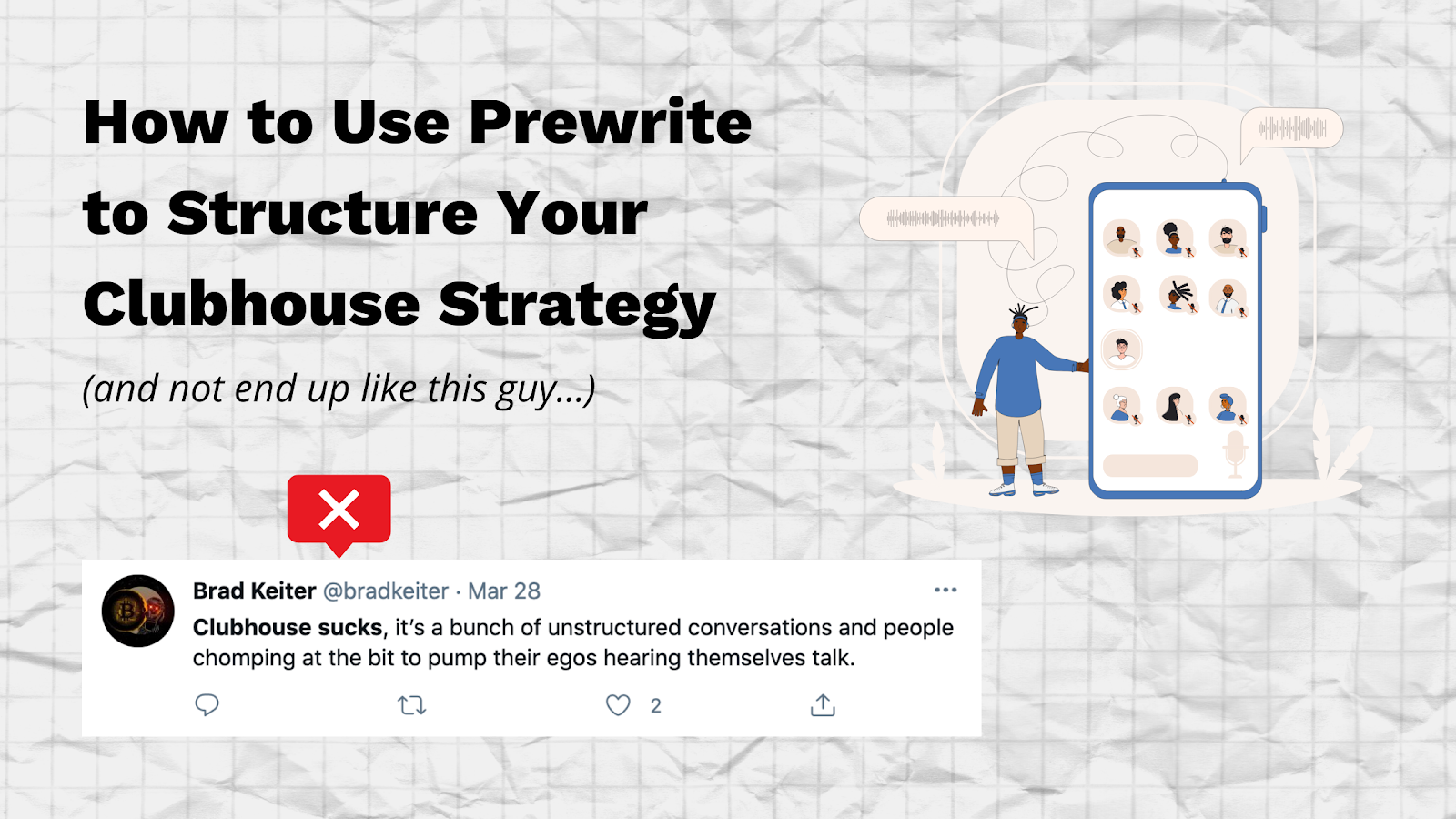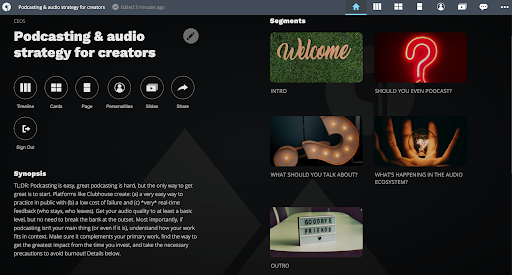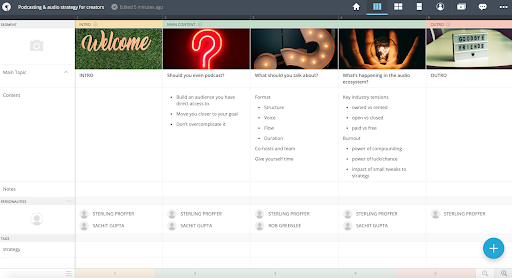
You love Clubhouse because it isn’t scripted.
In great rooms, conversations flow seamlessly. Topics magically converge into insight.
You hate Clubhouse because it isn’t structured.
In cringe rooms, conversations devolve into mammalian grunts of status-seeking.
In this breakdown, we’ll show you how to use Prewrite to structure your Clubhouse strategy so you can have insight-packed conversations without losing your audience.
But first let’s unpack the terms “scripted” and “structured.”
Scripts developed out of feature-length films, made their way into radio, and eventually became loved by telemarketers and hated by consumers.
But are scripts all bad?
No chance!
Your favorite movies started as scripts (called screenplays in the biz) and they turned out wildly entertaining.
Scripted media goes wrong when the actor, or in this case Clubhouse host, uses a script for turn-by-turn directions.
You’ve probably heard or even felt an amateur podcaster ask a question, get an answer, and immediately move onto the next question on their list. Over and over.
Turn left. Then right. Then left again. Once you’re headed north, veer west for half mile 'til you arrive at your destination.
It sounds unnatural at best and unprofessional at worst.
If scripted audio feels turn-by-turn, then structured audio goes something like this:
Head west outta town 'til you reach the World’s Tallest Cowboy Boot. When you get there, ask Tex which way the winds blowin’. He might tell ya veer north to avoid The Banditos. Or he could keep ya straight so you see the sun set over the armadilla foothills.
Can you picture the difference?
Structure provides a landmark. Structure offers optionality based on how a journey (conversation) unfolds. Structure points you in the right direction but allows you to meander.
Ready to plan the structure of your Clubhouse strategy? Let’s get started.
# Come up With a Big and Unique Idea
Yes, this sounds obvious, but too many clubs and rooms lack direction.
A big and unique idea could be an observation, an opinion, a hypothesis, etc.
But it should include a subject, verb, and description.
Don’t fret, we’re not taking you back to high school english class. A quick primer:
Subject = person/place/thing
Verb = action/state/occurrence
Description = quality of the subject
Now let’s see it in action…
From Packy McCormick: newsletters are boring (opens new window)
Subject = newsletters
Verb = are
Description = boring
Awesome - now you have a big idea. But how do you make your big idea unique?
Another frame! Like so:
This is a Clubhouse Room about {big idea}. Unlike other Clubhouse Rooms about {big idea}, only we {unique take}.
Let’s see it in action, using Sterling Proffer’s “Creative Executive Officers (opens new window)” as an example.
CEOs is all about the creator economy.
Unlike other Clubs about the creator economy, only CEOs asks why great work goes unmade and why great work goes unseen.
And there you have your big, unique idea. It’s your ultimate destination.
But there will be many stops along the way. Many landmarks to see, like the World’s Tallest Cowboy Boot from the example before.
The landmarks you choose in your Clubhouse strategy should sound familiar from episode to episode. Your landmarks should also sound like subtopics under your big, unique idea.
Sterling’s big idea: creator economy
Sterlings big, unique idea: only CEOs asks why great work goes unmade and why great work goes unseen
Sterling’s subtopics: monetization, creativity, strategy
Now that we have our big, unique idea, let’s see how to establish structure in an individual room.
# Develop Your Room’s Landmarks
Each individual room needs its own big, unique idea or topic. Your subtopics serve as great fodder for your room content and typically sound like questions asked by the host or moderator.
But how should you structure your subtopics? How do you avoid being a cringe room?
Again we’ll turn to Sterling Proffer’s CEOs as a guide.
Big, unique idea: same as above
Episode subtopic: audio strategy
Episode subtopic landmarks: should you even podcast? What should you talk about? What’s happening in the audio ecosystem?
Here’s how this looks in a Prewrite home screen:

And here’s how it looks in Prewrite’s timeline view:

The landmarks live in the Main Topic boxes and their mini-outlines live in the content boxes.
You should read the timeline left to right, as it moves chronologically.
You might even want to keep the timeline view open as you go live on Clubhouse so you can reorient yourself on the path should the conversation meander.
Here’s how a room plan looks in the app: https://prewrite.com/storyshare/6064e07f11992141f1e44480 (opens new window)
Starting a room on Clubhouse is the easy part. Creating an amazing experience for everyone who’s in the audience is a little trickier. The key to creating a great room is to be a great moderator.
In addition to the tactics outlined in this article, there are two ways to continue your moderation journey. First, I recommend that you go into other rooms with amazing moderators and watch what they do. Second, you need to actually dive in and start your own room.